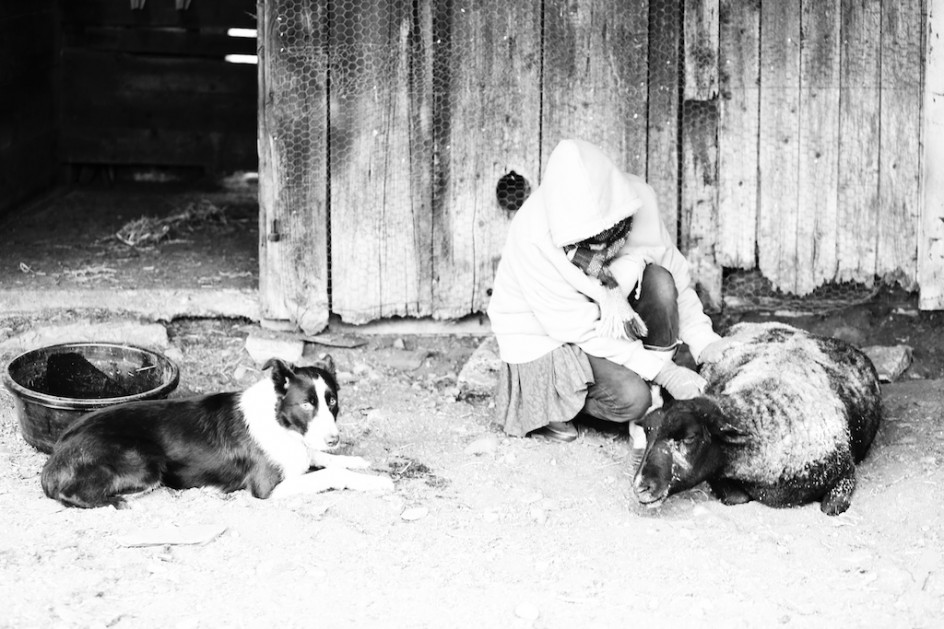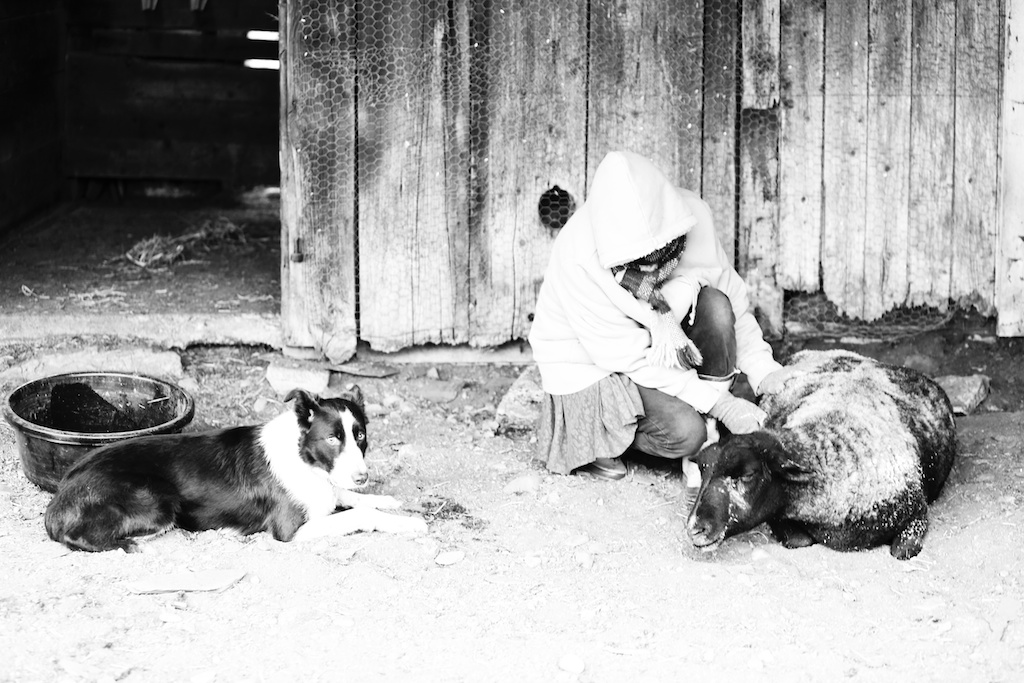
The cause of Tess’s death – as close as we all could get to it – was massive internal bleeding caused by a “vascular incident,” which could have been anything from an internal rupture to a heart attack or other internal hemorraghing, impossible to know for sure without an autopsy. Tess’s stomach was swollen, but she did not suffer from bloat or gas, the swelling was blood and fluid pressing against her lungs so that she could barely breathe.
I have written a lot about Tess in the last day or so, many of you are curious about her death, and we are nothing if not transparent here, those of you who are interested are entitled to know what happened.
Red and I were out herding the sheep and we were far from the flock – perhaps 75 yards – when Tess dropped to the ground so sharply I wondered if she had been shot, I actually looked to the road to see if there was anyone out there taking a shot at a deer or something else. She could not stand up and her head was flat on the ground, her eyes were dilated her breathing was labored. We got her up, and over time, walked her to the Pole Barn where she lay down and except for one or two brief efforts to stand, she did not eat or drink or move again.
When I have a sheep down like that, and if I have a calm and well-trained dog – Rose was one, Red another – I position the border collie close to the sheep. The command is “get ’em up, get ’em up,” and Rose was very effective at this, she would get behind the sheep and nip at them until they stood up, and this often gets sheep moving again. That is important when a sheep is down and struggling to breathe. I’ve had many sheep just take off and recover that way. If they are not critically ill, they will scramble to their feet and run for the rest of the flock. If they don’t – Tess didn’t move, Red kept looking at me for instructions – then they are really sick, and after some time, the decision is whether to euthanize them, shoot them or call a vet.
Red was not familiar with the “get ’em up” command but he kept looking at me for direction and I signaled to him to “walk up,” and “get the sheep up,” and he walked up close to pressure Tess. She didn’t move. Her stomach was distended and very hard – possible bloat, but worse than that.
Tess had emotional value but sheep are not worth much in the marketplace – $60, $70 maybe, so it makes little sense to spend hundreds of dollars on vet care. (Of course, we just spent $1,700 on a barn cat leg amputation, no sane farmer would do that.)
My philosophy – this is Maria’s as well – is to first try ourselves, we have medicine, syringes and experience. I tried penicillin and tubes to release the gas in the stomach, in the morning she was worse, so we called a vet to see if there was something we had missed that might help her heal, or barring that, the vet could put her down. I made an emergency call to the Granville Large Animal Vet and they came within the hour. At this point, we could see that Tess was deteriorating, we wanted to resolve it or end it quickly.
Dr. Lauren Marsh inserted a needle in Tess’s side to release any gas – there was little – and then a tube into her stomach to pump out any fluid. There was some, but there was liquid elsewhere in her body, that would suggest blood. Something had ruptured, blood was coming out of her uterine canal.
There were several more things to try, but Maria wisely and humanely decided to end her suffering, and I agreed. Like human doctors, animal vets always have more things to try – Dr. Marsh said she could do an ultra-sound – and it is up to the animal owner or farmer to set the boundaries, not only of cost, but of perspective. Vets are not trained to do that, although Dr. Marsh completely supported our decision to euthanize Tess without further probing or procedures – her breathing was getting heavier, you could hear the fluid building in her lungs.
So there was clearly a massive internal injury, one connected to the vascular system. I have some more photos of Tess’s end I might put up in a bit, but overall, I think it’s time to move on from this chapter in our lives, I did feel the people following the story were entitled to this information. I am grateful for the kinds words and support, I am grateful to have shared this particular experience – we can all learn from any kind of death, an animal or a person. I learned a lot, thank you for coming along with me.
Decisions are an important affirmation of human dignity and identity, this is why I do not seek the advice of strangers far away, decisions define us, they are our voice and strength, and I am committed to making my own, mistakes and all. This is no one’s responsibility but Maria’s and mine, we do not make decisions like this collectively. As usual, most of the unwanted advice was wrong and ill-considered, even if we had listened to it. You just have to be there. In this case, I am proud of our decisions, they were strong and clear and humane. We did not lose perspective, we put the animal’s suffering first and resolved it quickly and lovingly and intelligently.

